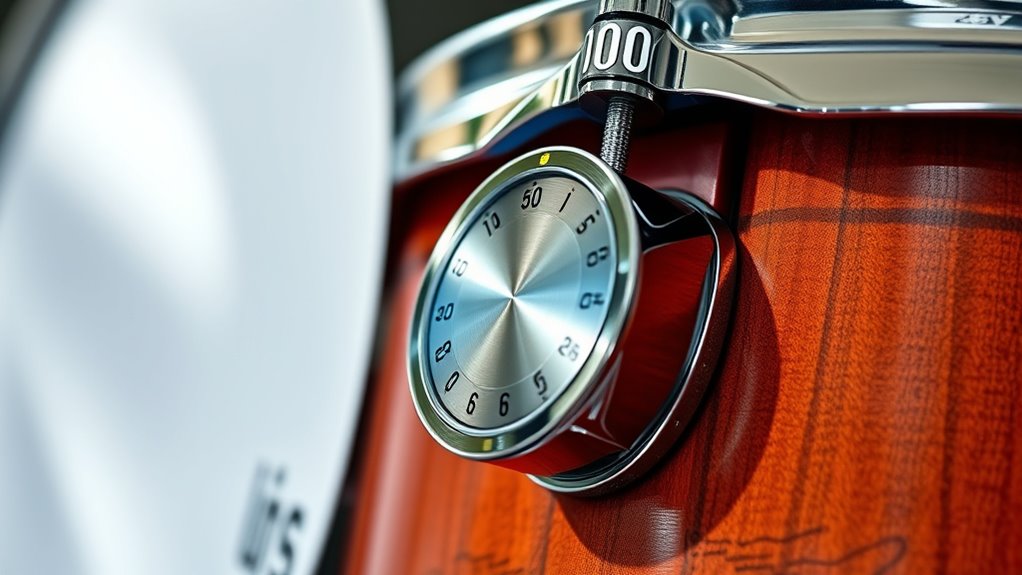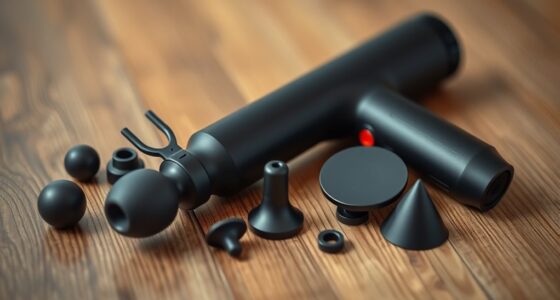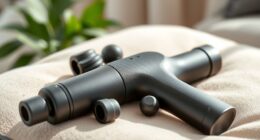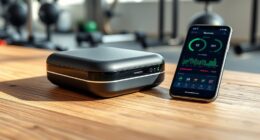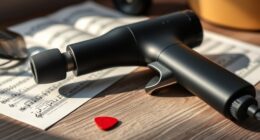The numbers on percussion instruments often refer to their size, pitch, or tension, which affects how quickly they can be played and how they sound. These numbers help you choose instruments that match your musical needs, whether it’s a faster rhythm or specific tone quality. Understanding these specifications lets you match speed ratings, BPM, and technical requirements. To learn how to interpret these numbers and find the best equipment, keep exploring further.
Key Takeaways
- Percussion speed numbers often refer to BPM (beats per minute), indicating how fast a drum or instrument can be played.
- Higher speed ratings typically mean the instrument supports faster playing passages and technical passages.
- Speed specifications may also include RPM ratings, showing revolutions per minute for mechanical components.
- Understanding these numbers helps match instruments to performance styles that require specific tempos and technical demands.
- Speed codes and zone classifications guide players in selecting percussion instruments suited for particular rhythmic and tempo requirements.
What Do the Numbers on Percussion Instruments Indicate?
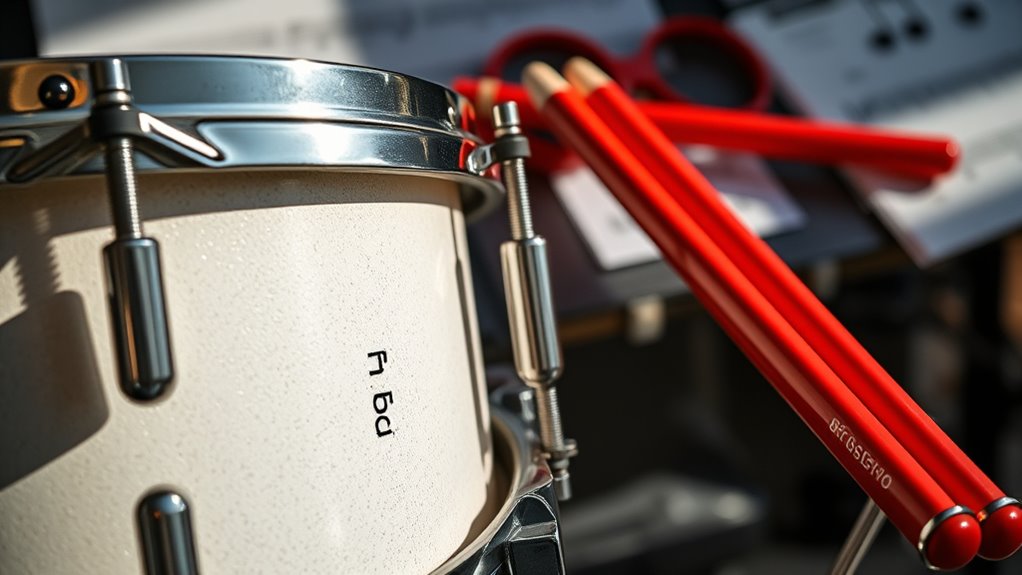
The numbers on percussion instruments typically indicate the size, pitch, or tension of the instrument, helping players comprehend how it will sound and respond. Historically, percussion techniques have evolved from simple hand-struck objects to sophisticated instruments with precise specifications. These numbers often relate to manufacturing standards established over time, reflecting advances in percussion instrument manufacturing. For example, drum sizes are numbered to show their diameter, which affects pitch and volume. Understanding these designations allows you to select instruments that match your musical needs. In the past, craftsmen relied on traditional methods, but now modern manufacturing ensures consistency and clarity in these measurements. Recognizing what these numbers mean helps you better gauge the instrument’s sound potential and how it integrates into your overall percussion setup. Additionally, manufacturing standards play a crucial role in maintaining uniformity across different percussion instruments, ensuring consistent quality and sound.
Understanding Beats Per Minute (BPM) and Tempo Markings
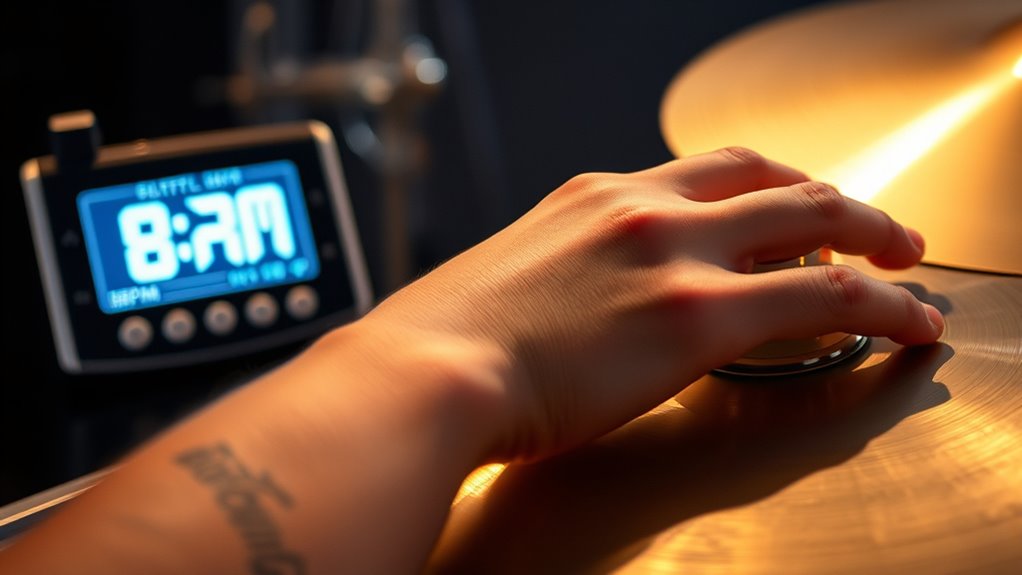
Understanding the tempo of a piece is key to performing or composing music accurately. BPM, or beats per minute, measures how fast a piece should be played, directly affecting musical timing and rhythm consistency. Tempo markings like “Allegro” or “Andante” help you interpret the desired speed. Use this table to understand common markings:
| Marking | BPM Range |
|---|---|
| Largo | 40-60 |
| Andante | 76-108 |
| Allegro | 120-168 |
| Presto | 168-177 |
Understanding the relationship between tempo markings and BPM can also aid in better musical interpretation and performance.
The Significance of Drum Speed Ratings and Strokes
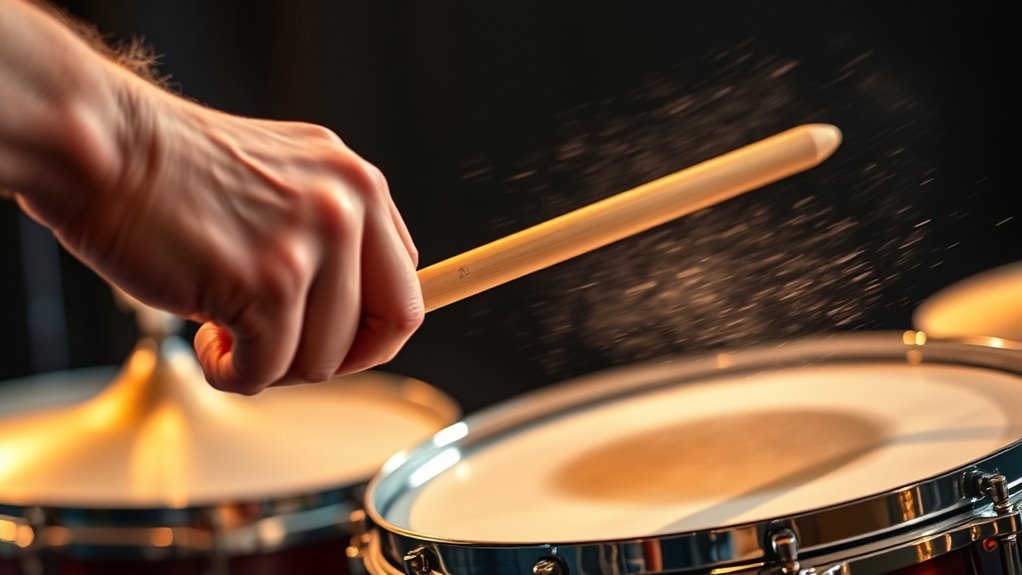
Drum speed ratings and strokes play a essential role in achieving the desired rhythm and dynamics in your performance. They influence your drumstick control, helping you execute precise hits at various tempos. Higher speed ratings allow you to play faster passages confidently, enhancing your percussion agility. When you understand these ratings, you can match your strokes to the tempo, ensuring consistent sound and timing. This knowledge helps you develop better technique and endurance, especially during complex fills or rapid drum rolls. By paying attention to speed ratings, you can push your limits while maintaining control. Understanding pinball mechanics can inspire new approaches to practice and precision, emphasizing the importance of timing and mechanical consistency. Ultimately, mastering how stroke speed relates to ratings boosts your overall percussion skills, making you more adaptable and expressive in any musical setting.
How to Read and Interpret Percussion Speed Codes
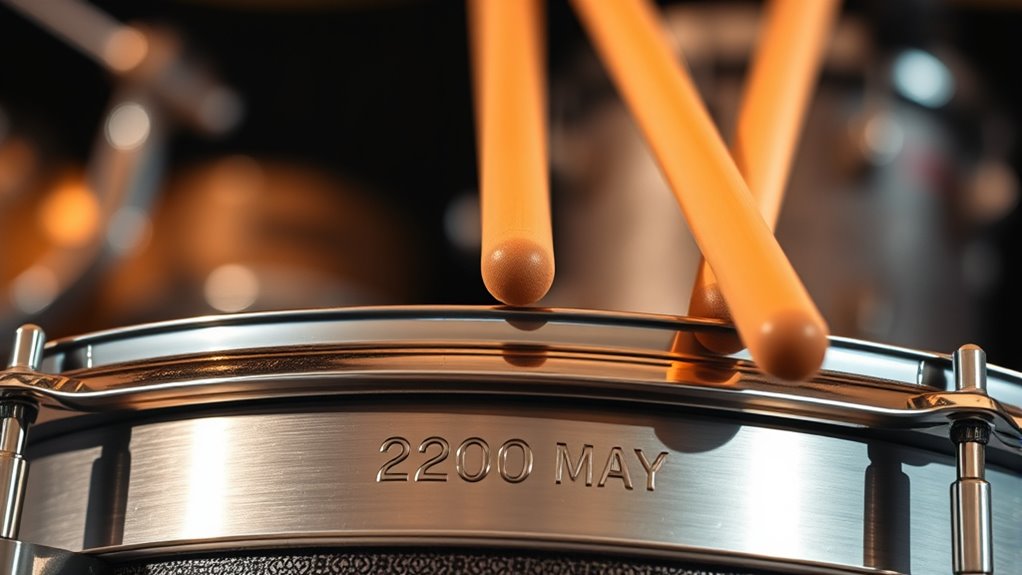
To interpret percussion speed codes correctly, you need to understand how to read the numbers and ratings that come with each drum. These codes often include speed numbering, RPM ratings, and specific zones indicating playing speed ranges. Once you grasp these points, you’ll be able to choose and match percussion instruments more effectively to your playing style. Additionally, understanding performance and comfort solutions can help you select the most suitable instruments for your needs.
Deciphering Speed Numbering
Deciphering percussion speed codes can seem confusing at first, but once you know what to look for, it’s straightforward. These codes typically use numbers that indicate the tempo or speed of the percussion instrument, helping you match the rhythm to your musical timing needs. For example, a speed code like “120” suggests a moderate pace, suitable for maintaining steady rhythm complexity. Higher numbers usually mean faster tempos, ideal for energetic sections, while lower numbers suit slower, more deliberate passages. Understanding these numbers allows you to quickly assess how a percussion instrument will fit into your song’s rhythm. By learning to interpret the speed codes accurately, you can select percussion that complements your music’s tempo and complexity with confidence and precision.
Understanding RPM Ratings
Understanding RPM ratings is essential for accurately interpreting percussion speed codes, as they specify how many revolutions per minute a percussion instrument’s component, like a drum head or rotor, completes during operation. RPM ratings help you gauge the instrument’s speed and ensure consistent performance. When reading these ratings, consider how they relate to your metronome calibration to maintain precise timing during practice or recording. Proper percussion instrument maintenance also plays a role, as dirt or wear can affect RPM accuracy. Knowing how to interpret RPM ratings allows you to match instrument speeds to desired tempos, ensuring your performance or training remains synchronized. Additionally, understanding the relationship between contrast ratio and image quality can help you select the right projector for your home cinema setup. By mastering RPM ratings, you can better control your percussion setup and achieve reliable, consistent results.
Recognizing Speed Zones
Recognizing speed zones on percussion instruments involves learning how to read and interpret the speed codes or markings that indicate different performance ranges. These markings help you understand the appropriate tempo for various musical timing and rhythm categorization. Speed zones are typically represented by numbers or labels that classify the instrument’s tempo range, such as slow, moderate, or fast. By familiarizing yourself with these codes, you can quickly identify suitable settings for different musical styles and ensure accurate rhythm execution. This skill allows you to match the percussion part to the overall tempo of a piece and maintain consistent timing. Additionally, understanding the percussion speed codes helps you adapt your playing to different genres and performance contexts, enhancing your overall musicianship. Mastering how to read these speed zones enhances your ability to perform with precision and adapt to diverse rhythmic requirements.
Practical Examples of Percussion Speed Measurements

To accurately measure percussion speed in real-world settings, practitioners often rely on practical examples that demonstrate how different techniques and tools work together. For instance, you might use a metronome to ensure consistent rhythm, or tap along with a recording to check musical timing. These methods help verify how well you maintain rhythm consistency during performances. Imagine:
Using tools like metronomes and recordings helps musicians maintain consistent percussion timing.
- Using a stopwatch to time a drummer’s rapid fills
- Comparing hand movements against a digital BPM counter
- Recording and analyzing a performance with software to identify speed fluctuations
- Recognizing market volatility that can influence the perception of tempo and timing accuracy in recordings
These examples show how real musicians gauge percussion speeds, ensuring their timing stays accurate and steady. Practicing with these tools helps you better understand how different speeds influence musical timing and overall performance quality.
Tips for Choosing Instruments Based on Speed Specifications
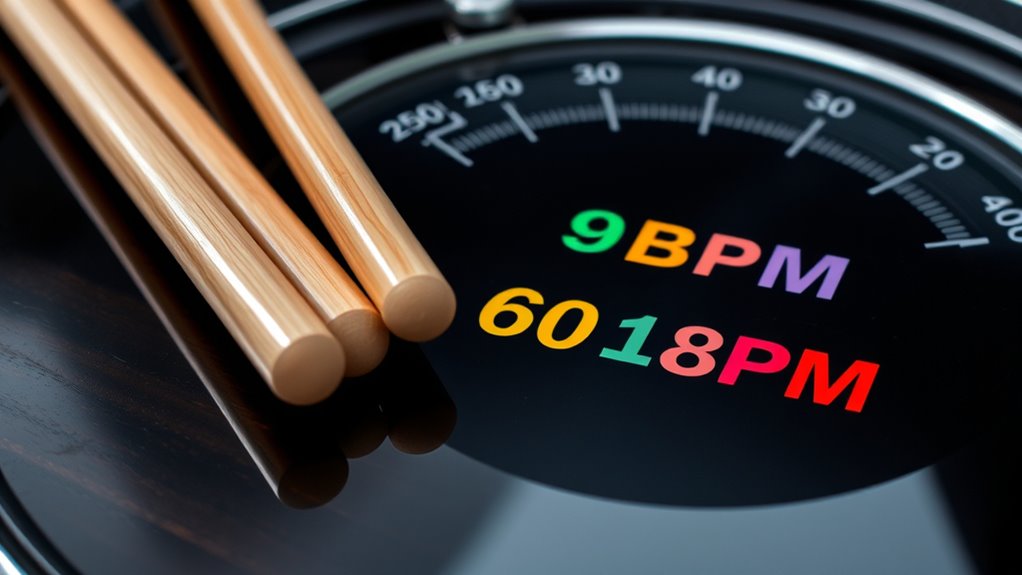
When selecting percussion instruments, paying close attention to their speed specifications is essential for guaranteeing they match your musical needs. Faster instruments often demand higher skill levels and can impact instrument durability over time. Consider how the speed affects maintenance requirements—slower instruments may need less frequent upkeep, while high-speed instruments might require more careful handling to prevent damage. Think about your playing style and performance context; if you perform rapid passages regularly, choose instruments designed for high-speed play and built to withstand increased use. Additionally, understanding AI vulnerabilities in instrument design can help in selecting models that incorporate the latest safety features and durability enhancements. Balance the instrument’s speed capabilities with its durability and maintenance needs to ensure longevity and reliable performance. Making informed choices helps you find percussion instruments that suit your technical skills and sustain your musical journey.
Frequently Asked Questions
How Do Percussion Speeds Affect Overall Musical Performance?
Percussion speeds directly influence your overall musical performance by impacting tempo consistency and rhythm stability. When you play at the right speed, your beats stay precise, helping the band stay synchronized. Faster speeds challenge your timing and control, while slower speeds demand patience and accuracy. Adjusting percussion speeds thoughtfully guarantees your performance remains steady, confident, and engaging, making it easier for everyone to follow the groove and deliver a polished sound.
Can Percussion Speed Ratings Vary Between Different Instrument Brands?
You might notice that percussion speed ratings can vary between brands due to differences in brand consistency and measurement standards. Each manufacturer may use distinct methods or criteria to determine their ratings, which can lead to discrepancies. It’s important to compare these ratings carefully and consider brand reputation. By understanding these variations, you can select instruments that match your desired speed and performance needs more accurately.
Are Faster Percussion Speeds Always Better for Professional Recordings?
Ever wondered if faster percussion speeds always mean better recordings? Not necessarily. While higher speeds can improve technique consistency and suit certain genres, they might sacrifice the warmth or feel you need for others. It’s about matching the speed to your musical style and the desired sound. Faster isn’t always better; it’s about choosing the right speed that enhances your performance without compromising musicality.
How Do Beginners Determine the Appropriate Speed for Their Skill Level?
When figuring out the right percussion speed, you should prioritize practice consistency and gradual tempo adjustment. Start slow to guarantee accuracy and build your skills steadily. As you gain confidence, slowly increase the tempo, listening carefully to maintain control. Don’t rush; focus on maintaining good technique at each speed. This approach helps you develop a solid foundation and improves your overall timing and skill level over time.
What Are Common Mistakes When Interpreting Percussion Speed Numbers?
Imagine you’re a modern-day drummer, but don’t let that distract you from common mistakes. When interpreting percussion speed numbers, you might fall into timing inaccuracies or misjudge the tempo. People often confuse the numbers, thinking higher means better, but it’s about matching speed to skill level. Overlooking these details leads to misinterpretation, so always double-check your understanding and practice slowly to develop accurate timing and rhythm consistency.
Conclusion
Now that you know what those numbers mean, you’re ready to navigate percussion speeds like a pro. Think of it as tuning into the heartbeat of your instrument, matching tempo with your rhythm. Remember, understanding these speeds helps you choose the right instrument and play with confidence. So, embrace the numbers—they’re your map to mastering percussion, turning every beat into a powerful story waiting to be told.
